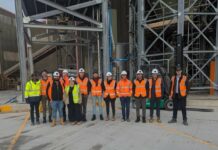The construction sector is a major source of air, water, and noise pollution around the world. It accounts for over 40% of worldwide carbon emissions, mainly due to inefficient energy use, poor air quality, and carbon-dense building materials.
Here are some of the ways that new building rules in Australia and around the world can assist construction projects to achieve net zero emissions.
Australia’s most recent attempts to minimize carbon emissions have resulted in the Green Building Council of Australia’s new Carbon Positive Blueprint for the Building Sector. The main goal of the strategy is to achieve net-zero emissions by 2050. By 2030, Australia intends to have sections of the country run on 50% renewable energy and others on 100% renewable energy. Additionally, any new precinct must also be climate-beneficial by the same year.
The GBCA Roadmap also advises architects and builders to use low-energy or net-zero products and services, such as electric vehicles and automated appliances. Upgrading appliances such as refrigerators, dishwashers, and washing machines with Green Star-certified machines can considerably increase a building’s energy efficiency.
While building procedures are unquestionably vital in achieving net zero, construction materials can have the largest influence. According to the New Buildings Institute, carbon alone in construction materials accounts for 11% of global emissions across the world.
Because concrete is the most often used material, it should be prioritized. Fly-ash concrete is a new alternative that increases rigidity and strength and needs less cement. Hollow core slabs can also be used instead of regular concrete slabs. They consume less CO2 during development and have great thermal qualities, which aid in building heating and cooling.
Steel and lumber are two more important materials that require upgrading. Reusing recycled steel from scraps can reduce emissions by half during a construction project since steel is produced primarily using energy. Wood cultivated sustainably and cross-laminated timber are more soundproof and have higher weight-to-strength ratios than wood created using traditional methods.
Many new eco-friendly insulation choices are available, including denim, cellulose, wool, bamboo, and cork. The market for structural insulated panels incorporating these materials is rapidly expanding, with a potential value of $260 billion by 2030.
These natural materials not only promote heat or cold air retention in buildings, but they also improve air quality. Air pollutants happen to be two to five times more concentrated than outside, owing primarily to volatile organic chemicals found in artificial items. The switch to sustainable materials minimizes carbon emissions while improving the building’s quality of life.
Nations worldwide have also been busy developing their innovative building codes, commonly known as reach codes or dress codes. They allow progressive districts to pursue their climate goals without imposing compliance on more conservative communities. The United States has been the global leader in establishing reach codes.
Efforts in Australia, the United States, and Canada to cut emissions from the construction industry will play a significant role in paving the way for a cleaner future. They will incentivize people to source responsibly, develop, and run properties with ownership, keeping the environment in mind. The law alone will not fix the problem, but it is a significant indicator of shifting views about climate disasters.



























